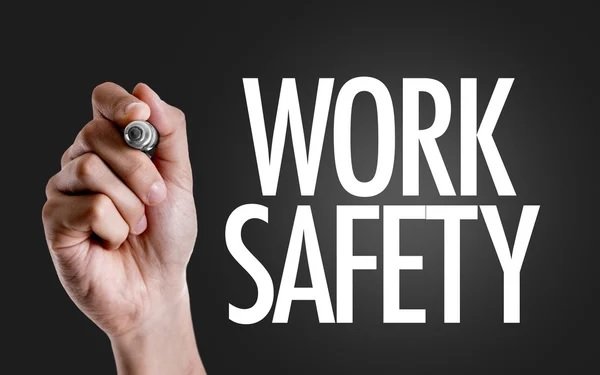Discover Singapore’s cutting-edge Safety & Health Management System Elevate workplace wellbeing, ensure compliance, and foster a culture of care #WorkplaceSafety #HealthFirst.
In an era where workplace safety and employee wellbeing are paramount, Singapore has taken a decisive leap forward with its innovative Safety and Health Management System. This comprehensive framework is not merely a set of rules or guidelines, it is a transformative approach designed to foster safer, healthier, and more productive work environments across the nation. By weaving together advanced strategies, regulatory precision, and a culture of care, the safety and health management system singapore is setting new standards in occupational safety and health that resonate globally.
At its core, Singapore’s Safety and Health Management System aims to create workplaces where every individual feels protected and valued. Recognising that safety is a collective responsibility, the system encourages collaboration between employers, employees, and regulators to proactively identify risks and implement preventive measures. This proactive mindset moves beyond traditional reactive practices, embracing a culture where hazards are anticipated and mitigated before accidents occur. The result is a dynamic environment where safety and health are deeply embedded in everyday operations, not just afterthoughts.
One of the most remarkable features of this system is its emphasis on continuous improvement. Organisations are encouraged to adopt systematic processes for assessing risks, monitoring safety performance, and refining their practices over time. This cyclical approach ensures that workplace safety evolves in tandem with emerging challenges and technological advancements. Rather than a static checklist, the system promotes an adaptive framework that responds intelligently to change, keeping safety measures relevant and effective.
Singapore’s government plays a pivotal role in supporting this vision. Through clear legislation and robust enforcement mechanisms, it ensures that businesses uphold their responsibilities without compromise. Beyond regulations, there is significant investment in education and training programs, empowering workers with the knowledge and skills needed to recognise hazards and act decisively. This educational emphasis cultivates a workforce that is not only aware but also actively engaged in maintaining a safe workplace.
Technology also features prominently in the system’s evolution. Digital tools and data analytics enable real-time monitoring and reporting of safety incidents, facilitating swift responses and informed decision-making. Such innovations enhance transparency and accountability, allowing organisations to track trends and address vulnerabilities more effectively. By integrating technology into safety management, Singapore is paving the way for smarter, data-driven approaches that boost overall resilience.
Importantly, the system recognises that health extends beyond preventing physical injuries. Mental well-being and ergonomic considerations are increasingly integrated into workplace safety programs. Stress management initiatives, mental health support, and efforts to create ergonomic workspaces demonstrate a holistic approach that respects the full spectrum of employee health. This broader perspective acknowledges that a healthy workforce is foundational to sustained productivity and organisational success.
Cultural transformation lies at the heart of Singapore’s Safety and Health Management System. Changing mindsets and behaviours to prioritise safety requires more than policy, it demands ongoing engagement, communication, and leadership commitment. Companies are encouraged to cultivate open dialogue about safety concerns, reward proactive behaviour, and embed safety values into their corporate identity. When safety becomes a shared value rather than a mandate, it naturally inspires collective vigilance and care.
The benefits of this system extend far beyond compliance and accident reduction. Workplaces that prioritise safety and health experience enhanced employee morale, reduced absenteeism, and increased operational efficiency. Employees who feel safe and supported are more motivated and loyal, fostering a positive organisational climate. Moreover, businesses that demonstrate strong safety practices often enjoy better reputations, attracting talent and customers who value responsible and ethical operations.
Singapore’s Safety and Health Management System also contributes to the nation’s broader economic and social goals. By minimising workplace incidents and their associated costs, the system supports sustainable business growth and competitiveness. It reduces the burden on healthcare and social services, contributing to national well-being. In this way, workplace safety becomes a vital thread woven into the fabric of societal prosperity.
Despite its many strengths, the system continuously faces new challenges. The rise of gig economy jobs, remote work, and emerging technologies introduces complex safety considerations that demand innovative solutions. Singapore’s commitment to ongoing research, stakeholder collaboration, and policy refinement ensures that its safety framework remains forward-looking and inclusive. This adaptability is crucial to maintaining the system’s relevance in an ever-changing world.
Conclusion
In conclusion, Singapore’s Safety and Health Management System is more than a regulatory framework, it is a revolutionary approach that redefines how workplaces protect and promote wellbeing. By blending proactive risk management, technological innovation, cultural change, and holistic health perspectives, Singapore has crafted a model that inspires confidence and sets a high benchmark for safety worldwide. As organisations embrace this system, they not only safeguard their employees but also unlock the potential for greater productivity, resilience, and long-term success. This visionary approach signals a future where workplace safety is not just a priority but a fundamental cornerstone of thriving communities.
